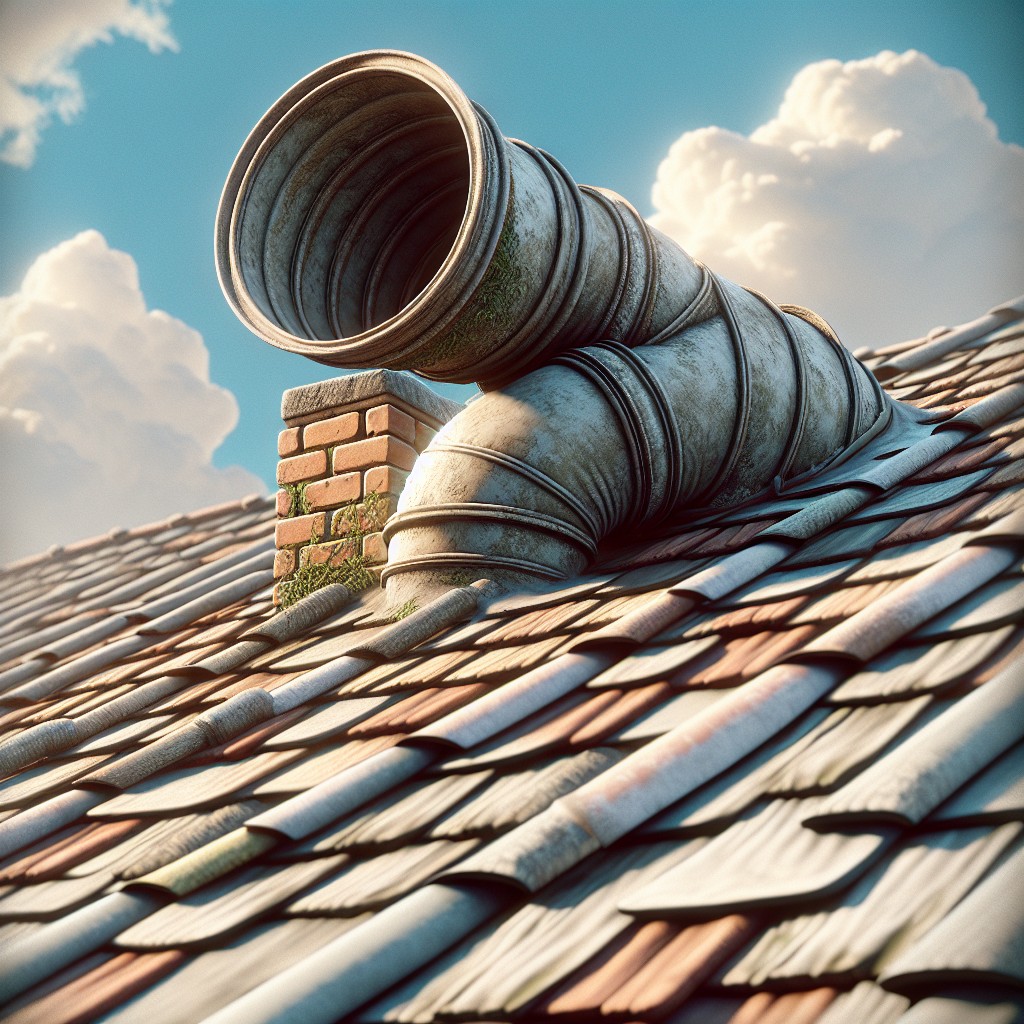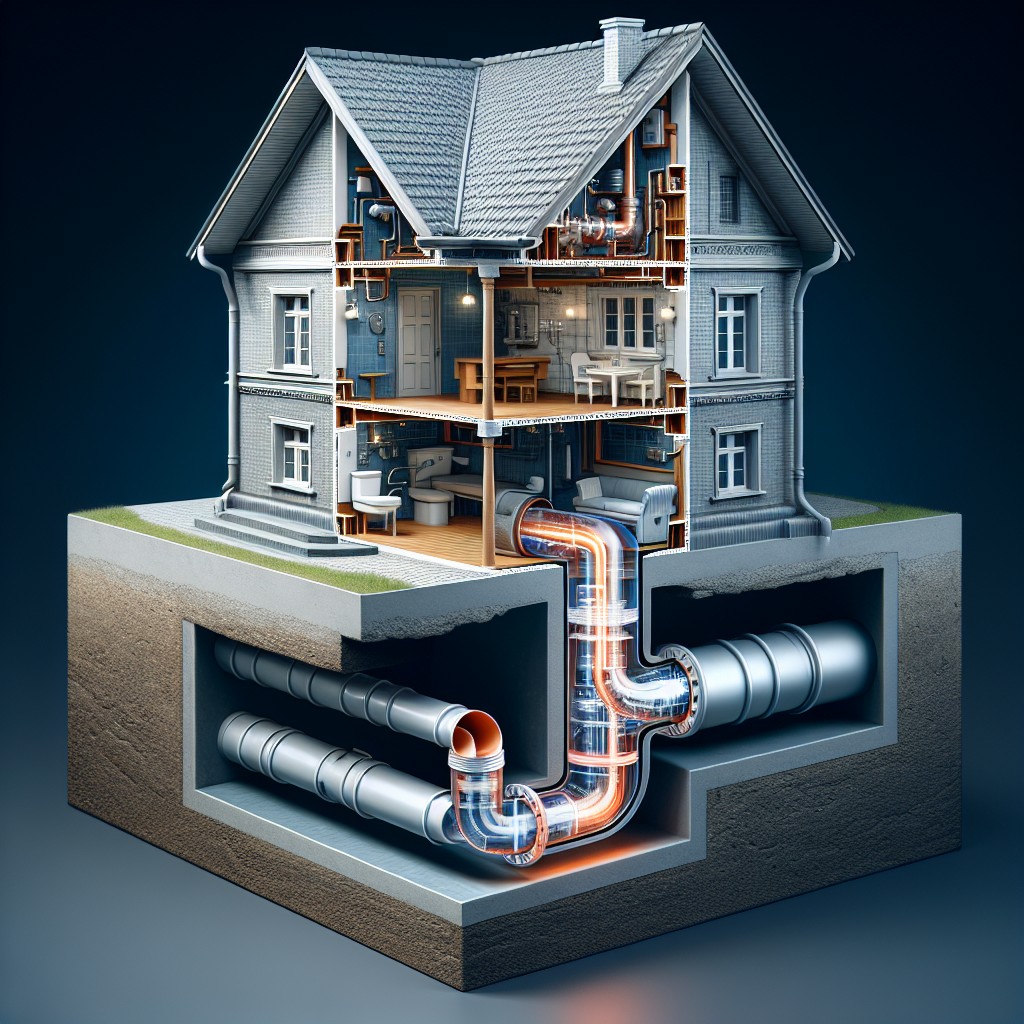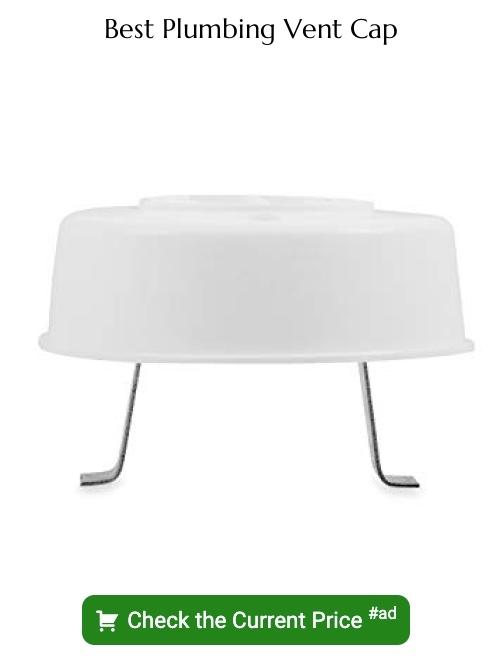Last updated on
Understanding the importance of the sewer vent pipe on your roof is crucial because it plays a pivotal role in your home’s wastewater drainage system.
Key takeaways:
- Sewer vent pipes regulate air pressure and eliminate sewer gases.
- Proper drainage and waste decomposition depend on vent pipes.
- Blocked or faulty vent pipes can cause gurgling sounds and bad odors.
- Regular maintenance includes inspection, clearing obstructions, and tree management.
- Professional assistance is necessary for persistent issues and complex repairs.
Importance and Functions of Sewer Vent Pipes On Roofs

Sewer vent pipes, protruding from your roof, play a crucial role in your home’s plumbing system. They allow waste water to flow smoothly by preventing air locks in the waste lines.
Here’s how they work:
- Regulating Air Pressure: Vent pipes maintain neutral air pressure in the drain system, ensuring efficient water flow and preventing siphoning of the trap that would allow sewer gases into your home.
- Eliminating Sewer Gases: These pipes serve as an outlet for sewer gases, channeling them harmlessly into the atmosphere above your home.
- Allowing Proper Drainage: By venting the drain pipes, waste and water flush more rapidly, reducing the chance of blockages.
- Enabling Waste Decomposition: The introduction of air into the sewer system aids the breakdown of waste by aerobic bacteria, contributing to a smoother-running sewer system.
Understanding these functions highlights the importance of maintaining a clear and well-functioning sewer vent pipe for a healthy home environment.
Relationship Between Vent Pipes and Home Plumbing Systems

Sewer vent pipes serve a crucial role in your home’s plumbing system, permitting the release of sewer gases outdoors and allowing air to enter the system, ensuring water and waste flow smoothly. These pipes typically extend through the roof to prevent the accumulation and eventual entry of noxious gases into living spaces.
Consider the following concepts to understand the synergy between sewer vents and household plumbing:
- Air Pressure Balance: Just as a straw holds liquid when the top is covered, plumbing requires a vent to prevent water locks.
- Waste Water Efficiency: Vents allow water to drain quickly and quietly by preventing vacuums in the pipelines.
- Gas Escape: Methane and other gases, produced during waste decomposition, escape through the vent instead of building up in your home.
- Regulation Compliance: Plumbing codes mandate vent pipes to ensure safe and effective drainage.
Understanding this shared relationship is vital for maintaining a functioning and healthy plumbing system.
Common Issues With Sewer Vent Pipes
Sewer vent pipes are prone to a few typical problems which can impact their efficiency. One common issue is blockage, often caused by leaves, nests or other debris that prevent proper airflow. In colder climates, ice and frost can accumulate at the pipe’s opening, leading to restricted gas escape. Cracks or breaks in the pipe, resulting from weather exposure or building settling, can lead to sewer gases leaking into the home. Corrosion, particularly in metal pipes, may occur over time due to the interaction with waste gases and external elements, potentially weakening the structure. Regular inspection and prompt attention to these issues are crucial for the health of a home’s plumbing system.
Signs of a Blocked or Faulty Sewer Vent Pipe
Detecting a blockage in your sewer vent pipe can prevent more serious plumbing issues down the line. Keep an eye out for these telltale signs:
- Gurgling sounds emanating from drains typically indicate trapped air pushing through water in your drain traps.
- Sluggish drainage across multiple fixtures suggests a widespread ventilation problem rather than a local clog.
- Bad odors permeating your home can be caused by sewer gases backing up due to inadequate venting.
- Noticeably slower toilet flushes are often early indicators of vent pipe issues since toilets rely heavily on proper venting for optimal operation.
If these symptoms are present, immediate attention to your vent pipe is prudent to maintain a healthy plumbing system.
Maintenance Tips for Sewer Vent Pipes
Regular maintenance of sewer vent pipes is essential to ensure proper ventilation of your home’s plumbing system. Here are key actions that can help maintain an efficient and functional vent pipe:
1. Periodic Inspection: Check your vent pipe annually for signs of damage, blockage, or wear. Look out for cracking, rust, or loose fittings that might affect the pipe’s integrity.
2. Clearing Obstructions: Keep the opening of the vent pipe free from leaves, nests, and other debris that could obstruct airflow. A plumber’s snake or a high-pressure water flush can be effective for clearing out clogs.
3. Tree Management: Trim back tree limbs that may grow too close to the vent pipe, as these can contribute to blockages or physical damage.
4. Winter Precautions: In colder climates, ensure that the vent pipe is insulated properly to prevent freezing. Also, consider installing a vent pipe cover to combat frost closure.
5. No Chemical Interference: Avoid using harsh chemicals that could erode or damage the vent pipe material over time. If necessary, consult a professional to recommend safe cleaning agents.
Routine upkeep reduces the risk of plumbing issues related to vent pipes and helps maintain a healthy home environment.
Methods to Prevent Frost or Ice Build-up
To mitigate frost or ice accumulation on your sewer vent pipe, insulation is key. Fit your pipe with an insulation sleeve specially designed for outdoor plumbing. This material acts as a barrier against cold temperatures, preventing the condensation and subsequent freezing of gases inside the pipe.
Another preventative measure is increasing the diameter of the vent pipe. Larger pipes are less likely to become completely blocked by ice. Consider upgrading to a pipe with a wider circumference if you live in an area with extreme winter weather.
Installing a vent pipe heater is also an effective method, especially in regions notorious for harsh winters. These heaters, which wrap around the pipe, maintain a constant temperature to keep the vent free from ice.
Regular roof maintenance, including the removal of snow and ice accumulation around the vent pipe’s opening, prevents blockages. This physical intervention ensures the pipe can properly expel gases and equalize pressure within your home’s plumbing system.
Lastly, keep in mind that natural solutions such as a roof design that maximizes sunlight exposure can help in reducing ice build-up. A sunny roof surface decreases the possibility of prolonged freezing conditions around your vent pipe.
Appropriate Chemical Use and Alternatives for Cleaning
When addressing build-up in sewer vent pipes, proceed with caution; improper chemical use can harm plumbing systems. Opt for enzyme-based cleaners which naturally break down organic matter without damaging pipes.
Baking soda and vinegar, poured directly into the vent, offer a non-toxic alternative, creating a fizzy reaction that helps clear minor clogs.
For regular upkeep, warm water flushes can help maintain clear vents.
Avoid harsh chemicals like drain cleaners, as they can corrode pipes and seals, leading to more significant issues.
Always wear gloves and safety goggles when handling any cleaning agents to protect your skin and eyes.
Troubleshooting Steps for Common Sewer Vent Issues
When addressing common issues with sewer vent pipes, the first step is to assess and identify the specific problem. For gurgling drains or a distinctive sewage smell, you may be dealing with blockages or obstructions:
1. Inspection: Begin by visually examining the roof vent for obvious blockages, such as leaves, bird’s nests, or debris. Ensure safety by using a stable ladder and taking necessary precautions.
2. Clear Blockages: If accessible, remove any visible obstructions by hand or with a tool, like a plumber’s snake or a specialized vent cleaning brush.
3. Check for Ice: In colder climates, ice can form inside the vent. Carefully thaw any ice blockages using hot water, a heat tape, or a hair dryer, avoiding open flames.
4. Water Test: Pouring water down the vent pipe can help determine the severity of a blockage. If the water backs up and does not drain, the clog is significant and may necessitate professional intervention.
5. Test Drainage: Flush the toilets and run the sinks. If drainage has resumed to normal and there are no abnormal noises, the vent is likely clear.
6. Listen for Noises: After attempting to clear the pipe, listen for a difference in plumbing sounds. Continuous or returning noises could signify more complex issues.
Persistent problems or uncertainty in addressing vent pipe issues should prompt a call to a licensed plumber, as improper handling could lead to further damage or health risks associated with sewer gases.
When to Call a Professional
Recognizing the limits of DIY interventions is crucial for both safety and the integrity of your plumbing system. It’s advisable to seek professional assistance in the following scenarios:
- Persistent unpleasant odors persist even after attempts at clearing blockages.
- Multiple fixtures are draining slowly, indicating a system-wide issue that’s likely beyond the vent pipe.
- Water levels in toilets fluctuate abnormally, pointing towards significant blockages or vent issues.
- Audible gurgling sounds from drains, a red flag for compromised vent function.
- Signs of sewer waste or water pooling around the vent pipe exit on the roof.
- Visible frost or ice cap obstructing the roof vent pipe in winter climates, despite taking preventative measures.
If any of these signs are present, it’s time to hand over the reins to a licensed plumber who can diagnose and rectify complex issues with the necessary expertise and tools. Acting promptly can prevent potential damage to your home and ensure a healthy, functioning plumbing system.
Professional Services and Installation Techniques for Sewer Vent Pipes
Hiring a licensed plumber ensures adherence to building codes and safety protocols during the installation or repair of sewer vent pipes. These professionals evaluate the home’s plumbing layout, determine the optimal placement for vent pipes, and size them appropriately to balance the system’s air pressure.
Installation by a skilled plumber typically involves:
- Accessing the roof and locating a strategic point for the vent pipe that’s close to the bathroom fixtures.
- Drilling a hole in the roof with precision to fit the pipe without causing unnecessary damage to roofing materials.
- Securing the vent pipe with proper flashing to prevent leaks, ensuring it extends high enough above the roof to prevent snow or debris blockage.
- Sealing all joints with high-quality, weather-resistant materials to withstand temperature changes and environmental factors.
- Conducting a thorough test for any leaks and checking the system’s functionality to mitigate the risk of sewer gas entering the home.
Regular professional inspections can identify any potential issues before they escalate, providing homeowners with peace of mind and sustaining the health of the home’s plumbing system.





